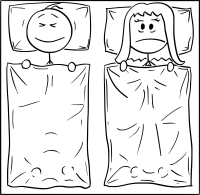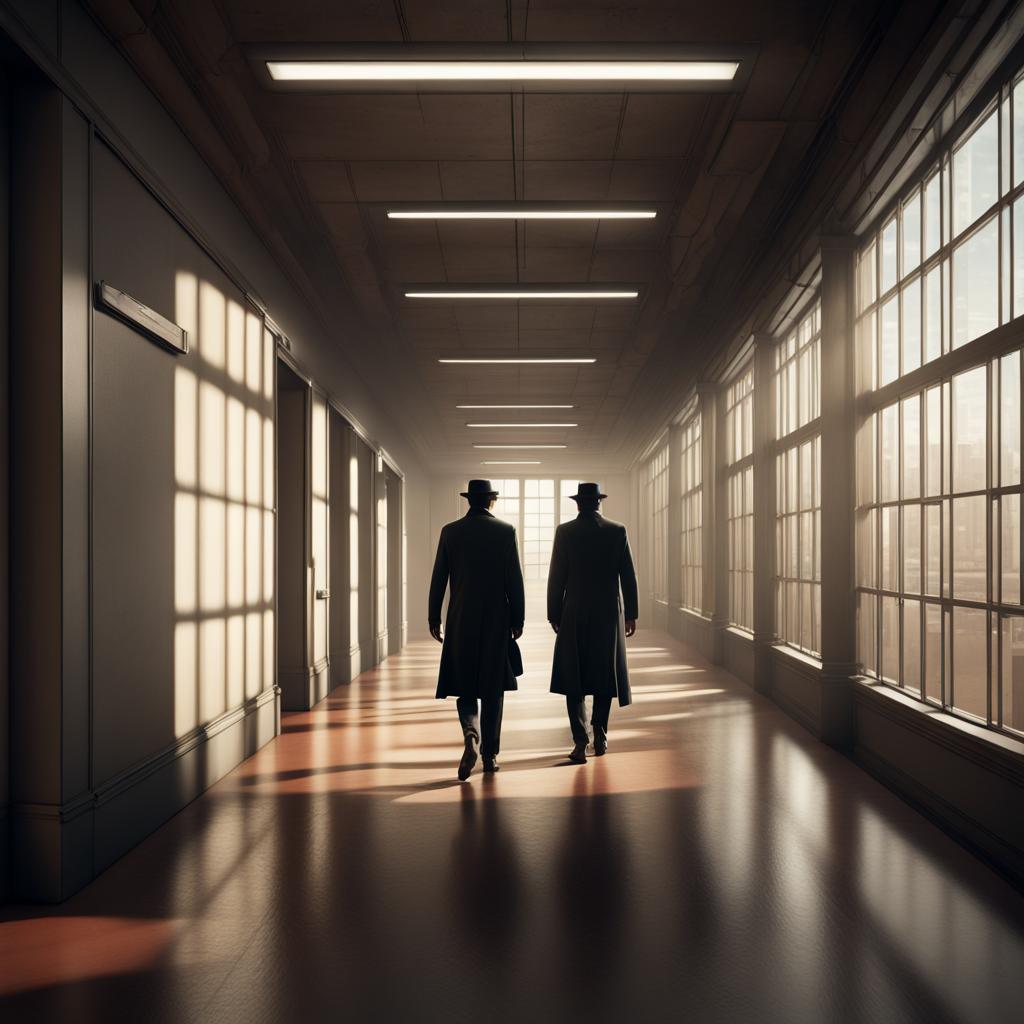Shadow people are dark, inorganic figures that appear as shadows when someone glances in their peripheral vision and vanish when they turn away.
Paranormal and cryptozoological researchers have long explored this phenomenon, believing them to be malevolent ghost-like beings that cause some people to become terrified.
Origin
Shadow people are dark silhouettes with human-shaped and profiled outlines that appear and disappear within one’s peripheral vision, often perceived by believers of paranormal phenomena as spirits, aliens, or demons.
Paranormal creatures are often perceived to exert an oppressive, negative influence and cause their victims to become paranoid, fearful or even delirious. Some believe these entities hypnotize victims into doing things they don’t wish for, and force them into performing actions they wouldn’t normally undertake.
Shadow people often appear as tall, ethereal figures reminiscent of ghosts and demons found in folklore. These shadowy beings have often been described as portents of destruction and ruin, such as death, poor harvests or disease. Their existence can be found across cultures throughout history.
Others who believe in paranormal activity regard shadow people as aliens, with many citing abductee experiences as proof. It has been reported that these entities can pass through walls and closed doors, disappear and reappear instantly, interact directly with victims, as well as engage them on a personal level.
There are various theories concerning what shadow people might be. Some suggest they could be interdimensional beings that travel between our reality and an alternate dimension. Others consider them alien grays, extraterrestrials, or demons. Some theories propose they’re time travelers or anomalies in our universe.
Skeptics claim that shadow people are an illusion created by something other than supernatural forces. According to them, shadowy figures might be caused by sleep paralysis. In this condition, people remain conscious but are unable to move or speak normally and may experience feelings of being suffocated while fully conscious. Additionally, other non-paranormal causes include high emotional states, sleep deprivation or substance abuse.

Types
Eyewitness accounts indicate that shadow people can assume different shapes and forms. Some appear more humanlike while others take on an apparitional quality. Unlike ghosts, however, shadow people typically don’t resemble any specific individuals nor possess discernible clothing. According to eyewitness reports, these entities usually appear as formless black masses that look like two-dimensional shadows, or in misty cloud-like figures that blend in seamlessly with the environment. They may dematerialize quickly into dark, animalistic figures with contorted features or into columns of misty smoke.
Shadow entities may feed off of the energy of distressed humans. When this occurs, shadow people often move around or toddle through walls until they come upon an area with someone present that can provide sustenance. They siphon their energy in ways similar to vampires getting blood, before fleeing once the person releases enough energy from themselves.
Shadow entities have many characteristics and origins. Some believe they could even exist across dimensions. Some consider them souls of those who have passed on, while others see them as demonic entities or alien beings. No matter their source, shadow people can be highly disturbing, leading to both physical and psychological symptoms.
Researchers have suggested that shadow people are an illusion caused by physiological or psychological conditions, drug usage or interactions between external agents and our bodies. One realistic example is sleep deprivation, which was mentioned previously.
One of the more frequently reported shadow entities by eyewitnesses is a tall, gingerbread-like man with a hat who emits an aggressive or hostile energy, often described as hostile or aggressive behavior. Another often reported shadow being is a short hooded twin who tends to be less hostile but more curious or playful. Finally, there is “Hat Man,” an entity with devilish or demonic-like characteristics who seems more solid than other shadow entities, and wears various types of hats.
Symptoms
Shadow people are dark figures that appear in our peripheral vision and often look similar to humans, yet are less detailed. They can move, teleport or emit an aura of dark energy which may make us fearful or paranoid; but often only appear for short periods, before disappearing just as swiftly.
Witnesses frequently report hearing the voices of shadow people. Their voices can range from soft or harsh depending on the entity. Sometimes they sound quite similar to someone the person knows or has know previously. Sometimes these shadow people resembled familiar characters such as Mothmans. Shadow people should not be mistaken with aliens as these tend to have malevolent intent.
A documentary called The Nightmare explores the experiences of those who have encountered shadow people, and many related instances may be connected with sleep paralysis (being trapped in your own dreams), with research suggesting a certain area of the left temporoparietal junction being responsible.
People who have experienced shadow people often report feeling like someone was following them or sensing a presence in their home, as well as hearing voices and seeing visions that appear real to them. Sometimes this experience has even been associated with mental disorders such as paranoia and schizophrenia.
Some believe shadow people to be interdimensional beings or ghosts from those who have died. Others see them as evil spirits or demons. However, some consider shadow people to be benign guardian angels who help keep society running smoothly.
Shadow people have been reported by people worldwide and can often be found in cemeteries, abandoned buildings and dark alleyways. However, they have also been seen in hospitals, homes and offices.

Causes
One popular theory suggests that shadow people are inter-dimensional beings who can sometimes “slip” between our world and another, explaining why they seem able to pass through walls and doors, as well as appear and then disappear suddenly. Another possible cause may be alien abductions, as some individuals who experienced them have claimed seeing alien grays with similar abilities.
People who have encountered shadow people report seeing either friendly or neutral entities, while others reported them being sinister and frightening. It is thought that their behavior and energy expressed is determined by the emotions of the person seeing them.
Assuming you are happy and stable, chances are higher of encountering a neutral or friendly shadow person, while depressed and anxious people are more likely to encounter negative or even malevolent shadow people. Shadow people have also been known to appear in animal forms, uniform blobs or other indescribable shapes. Their shapes change regularly due to different circumstances. They may move with regular human gaits or quickly, slowly or entirely different than a typical human movement.
Finding shadow people can be unnerving, but it is essential to remember they cannot harm you. Keep a record of your experience so you can recall it later. Some find carrying protective amulets or praying can also help to ward off negative shadow people. Also consider you overall mental health condition, and do not be afraid to seek professional help.
Shadow Figures
Shadow figures are psychological archetypes that represent the suppressed or hidden parts of our personality. Coined by Swiss psychiatrist Carl Jung, the term “shadow” refers to the dark side of our psyche, which encompasses the aspects we deem unacceptable, unacknowledged, or repressed. These shadow figures can embody various characteristics, such as our fears, insecurities, desires, and unresolved conflicts.
Identifying our shadow figures is a crucial step towards personal growth and self-awareness. These figures can manifest in different ways, often appearing in dreams, fantasies, or projections onto others. They may take the form of an inner critic, an envious or aggressive side, or even a suppressed creative or adventurous spirit.
Shadow figures can significantly influence our relationships, often leading to patterns of conflict or projection. Unacknowledged aspects of our personality tend to project onto others, causing us to perceive those traits in them instead of recognizing them within ourselves. This projection can create misunderstandings, tension, and even repetitive negative relationship dynamics.
Shadow figures exhibit similar characteristics to shadow people, but with a few notable differences. While shadow people are often perceived as formless dark masses, shadow figures possess more distinct shapes and outlines. Witnesses often report seeing these figures as clearly defined human-like silhouettes, complete with identifiable features such as hats, clothing, or even facial expressions.
Unlike shadow people, shadow figures are not necessarily associated with negative emotions. Witnesses have described encounters with shadow figures that appear curious, neutral, or even protective. Some believe that these entities could be the spirits of deceased loved ones or benevolent beings from the spirit world. However, it is important to note that shadow figures can also evoke fear and unease, depending on the circumstances and the individual’s perception.

Shadow Person Sleep Paralysis
Sleep paralysis makes your senses hyper-sensitive, leading to frightening hallucinations that seem very real. Many experiences associated with these hallucinations involve intense fear and feelings of being suffocated or attacked. Some may believe they’re being controlled by an evil spirit. These terrifying visions can trigger panic and even rage, resulting in what’s known as Hypnopompic Hallucinations (Hallucinationss).
At present, it remains unknown exactly what causes these terrifying visions, but several possible factors are known. These can include insomnia or lack of sleep; narcolepsy; daytime sleepiness; sleeping on one’s back; disrupted work shift patterns from work shifts or jet lag; sleep apnea. Without professiona treatment, they could worsen and cause more frequent instances of paralysis.
These episodes may also be brought on by certain medications or natural psychedelics like datura and ayahuasca, or following an unpleasant dream such as nightmare. Most often these occurrences last only briefly from seconds to minutes before passing by without further impacting someone.
These terrifying hallucinations often result from disruptions to normal REM sleep patterns or paralysis, and may be an attempt by your brain to compensate for this disruption.
People who experience sleep paralysis have often associated the phenomena with demons or other supernatural beings, and have reported hallucinations tied to various phobias or life trauma. Furthermore, sleep paralysis itself may provoke a response that accentuates and heightens these frightening hallucinations.
Researchers now understand that sleep paralysis hallucinations of shadow people and other hallucinations are caused by a disinhibition in the right hemisphere and its target zones in V5 and hypothalamus, much like echopraxia when one’s actions seem misinterpreted by their virtual bodies like an animal or another person.
Footnote: The website editor encourages readers to objectively evaluate themselves to determine if professional help may be needed. If you read the entire article, you will realize that some situations may require a review from licensed clinicians for diagnosis and treatment.
Content listed below may contain affiliate links.
